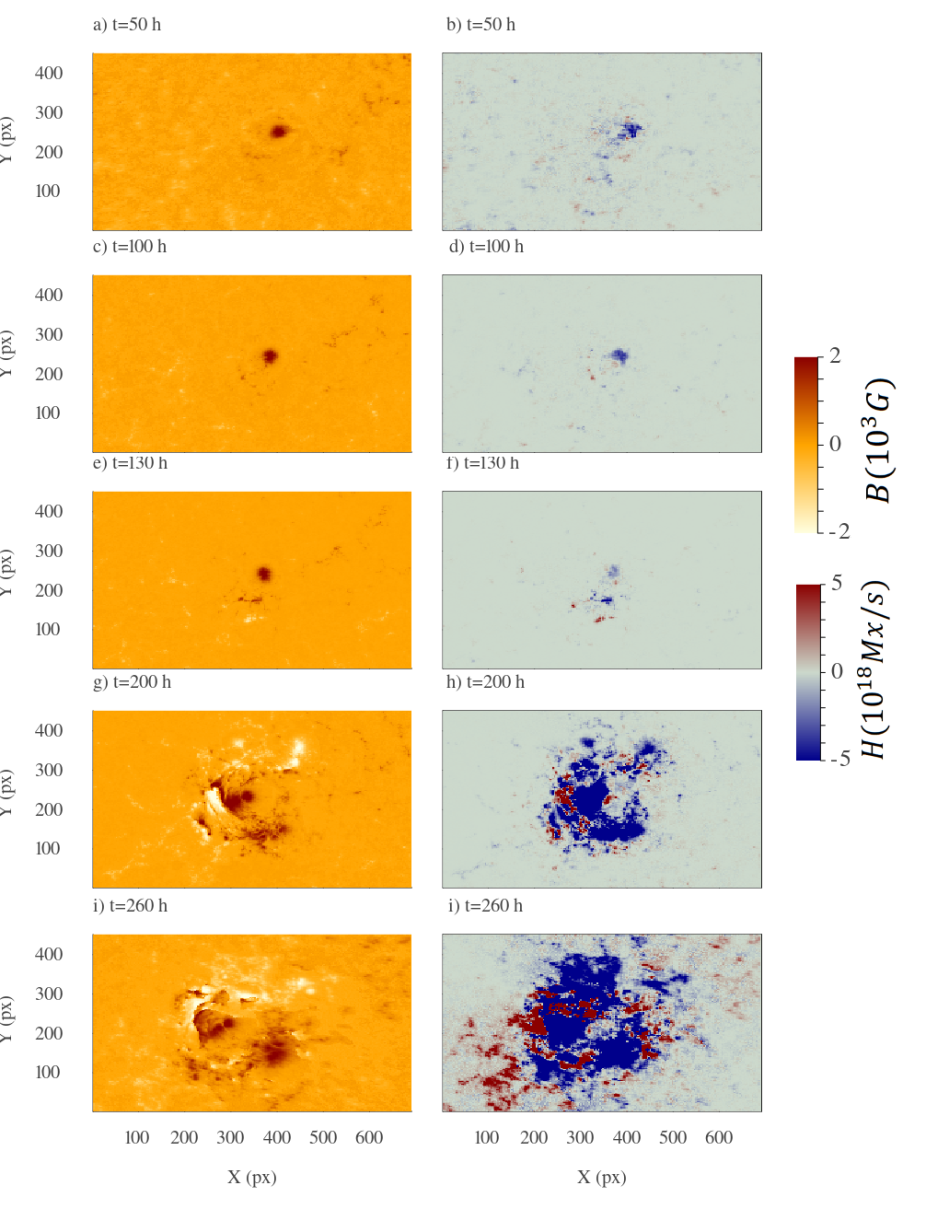
Evolution of the magnetic fields (left) and helicity density (right) for AR 12673.
We investigate how global toroid patterns and local magnetic field topology of solar active region AR12673 together can hindcast occurrence of the biggest X-flare of cycle 24. Magnetic toroid patterns (narrow latitude-belts warped in longitude, in which active regions are tightly stringed) derived from surface distribution of active regions, prior/during AR12673 emergence, reveal that the portions of South-toroid containing AR12673 was not tipped-away from its North-toroid counterpart at that longitude, unlike the 2003 Halloween storms scenario. During minimum-phase there were too few emergences to determine multi-mode warped toroid patterns in longitude. A new emergence within AR12673 produced a complex/non-potential structure, which led to rapid build-up of helicity and winding that triggered the biggest X-flare of cycle 24. Such a minimum-phase storm can be forecast with only hours' lead-time. However, global patterns and local dynamics for a peak-phase storm, such as that from AR11263, behaved like 2003 Halloween storms, producing the second biggest X-flare of cycle 24. AR11263 was present at the longitude where the North and South toroids tipped-away from each other. Both toroids were warped in longitude due to higher wave numbers and were slowly evolving. While global toroid patterns indicate that pre-storm features can be forecast with a lead-time of a few Carrington Rotations, observed complex/non-potential field structure development hours before the storm can improve the forecast further. We infer that minimum-phase storms can be forecast only hours ahead, while flare-prone active regions in peak-phase can be anticipated at least a month ahead from global toroid patterns.